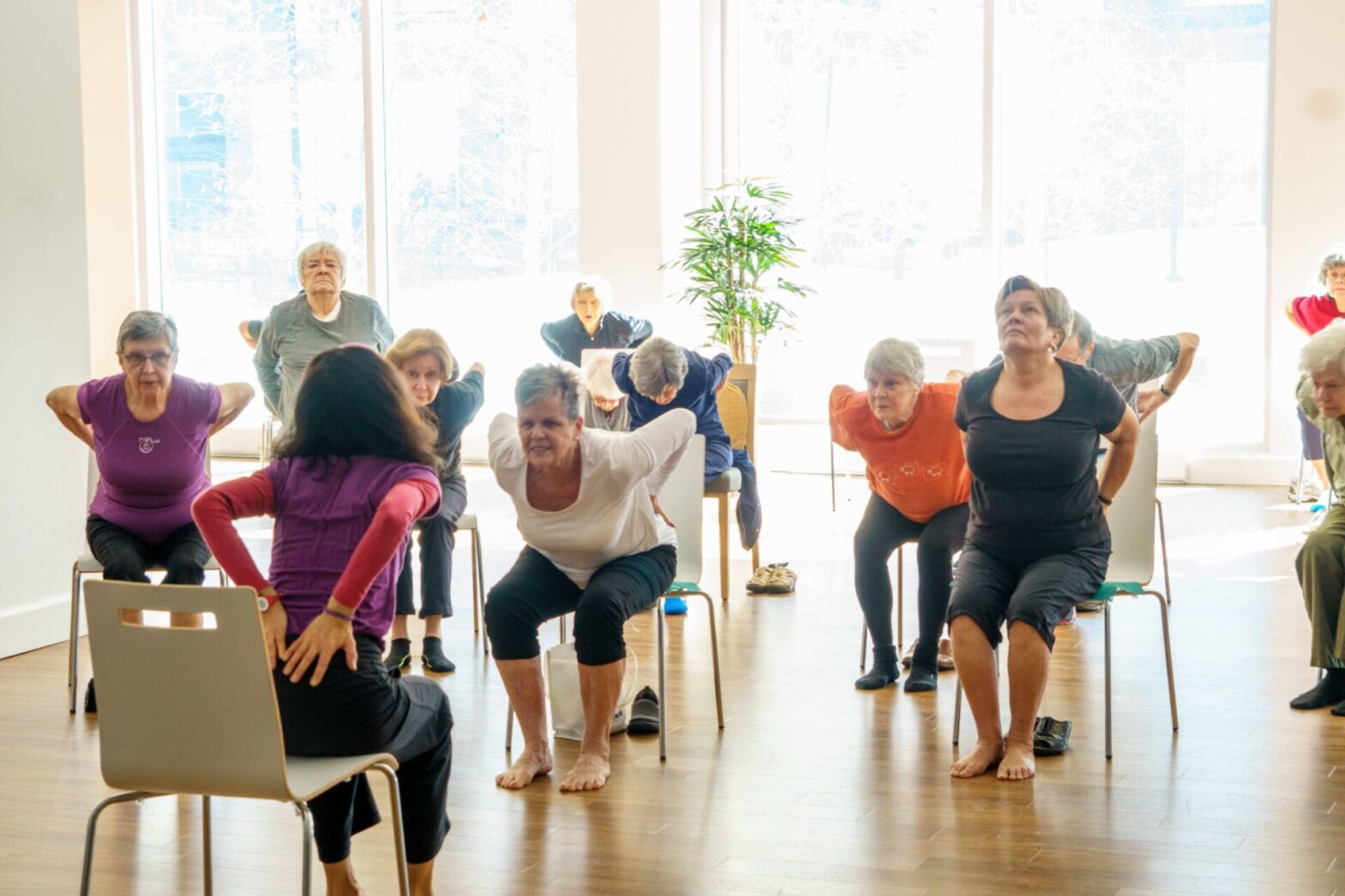The origins of chair yoga can be traced back to the traditional practice of Hatha Yoga, which dates back thousands of years in ancient India. Hatha Yoga encompasses physical postures (asanas), breathing exercises (pranayama), and meditation techniques. While the exact history of chair yoga as a distinct practice is not well-documented, its development can be attributed to the need for modified yoga practices to accommodate individuals with physical limitations.
Chair yoga gained traction in the 1980s and 1990s as a response to the growing demand for inclusive and accessible forms of exercise. It was primarily developed as a way to make yoga accessible to seniors or individuals with mobility challenges, allowing them to experience the benefits of yoga without the need for getting down on the floor or performing strenuous movements.
Traditionally, chair yoga or adapted yoga is designed to make yoga accessible to individuals who may have difficulty with traditional yoga poses due to age, physical limitations, or other health conditions. The increasing awareness of the accessibility of chair yoga has contributed to its mainstream popularity among individuals of all fitness levels.
Chair yoga poses involve modifications of traditional yoga sequences. The chair provides stability and support allowing participants to safely perform the movements and experience the overall benefits of yoga.
The benefits of chair yoga include increased flexibility, improved posture and balance, enhanced strength and endurance, stress reduction, improved mental focus and relaxation. Such gentle adapted yoga can also help alleviate muscle tension, joint stiffness, and promote better circulation.
Chair yoga sequences offer a versatile practice that can be customised to suit individual needs and abilities. It is an inclusive form of exercise that allows people of all fitness levels to engage in a mindful movement practice without the need for a yoga mat or specialised equipment.
For beginners, chair yoga is an excellent starting point who may be new to yoga or have limited mobility. The seated poses and modified movements make it attainable and less intimidating. Beginners can gradually build up strength, flexibility, and balance at their own pace, using the chair for support and stability.
Older adults or individuals with mobility issues can benefit from chair yoga as it addresses common concerns such as joint stiffness, reduced flexibility, and balance issues. The seated and supported poses make it safe and comfortable for seniors, allowing them to reap the benefits of yoga without putting undue stress on their bodies.
Many office workers spend long hours sitting at desks which can lead to poor posture, muscle stiffness and tension. Chair yoga can be practiced right at the desk, providing a convenient way to incorporate movement and relaxation into the workday. It helps alleviate physical discomfort, reduce stress, and promote better posture and circulation. With the rise of workplace wellness programs and the understanding of the negative effects of prolonged sitting, chair yoga has emerged as a primary source of fitness in office settings. Many employers recognise the importance of providing movement and stress relief options for their employees, leading to incorporation of chair yoga into corporate wellness initiatives.
For individuals recovering from injuries or surgeries, this low-impact practice can be especially beneficial. The seated and supported poses allow individuals to engage in mindful movements without putting excessive strain on injured areas. Chair yoga can aid in rehabilitation, improve range of motion, and promote overall healing.
The variety of adaptations and modifications available with chair yoga routines opens the practice to individuals of all fitness levels from beginners to more advanced practitioners. Poses can be adjusted to increase or decrease intensity, and individuals can progress at their own pace. Chair yoga provides a foundation for building strength, flexibility, and balance, regardless of the starting fitness level.
The internet and technological advancements have made chair yoga more readily available than ever before. Online platforms and resources offer a wide range of chair yoga classes, tutorials, and instructional videos, allowing individuals to practice from anywhere and at any time.
The current craze surrounding chair yoga reflects a growing interest in inclusive and adaptable forms of exercise that prioritize accessibility, holistic well-being, and stress reduction. It has gained popularity as a versatile practice that can be enjoyed by individuals of all ages, fitness levels or physical condition.
Like traditional yoga practiced on the floor, chair yoga incorporates breathing exercises, relaxation techniques, and mindfulness practices, which promote stress reduction and relaxation. The mindful breathing techniques can help calm the nervous system and induce a sense of relaxation and peace. The practice also encourages present-moment awareness and fosters a state of mindfulness, allowing participants to release tension and cultivate a sense of calmness for overall well-being.

